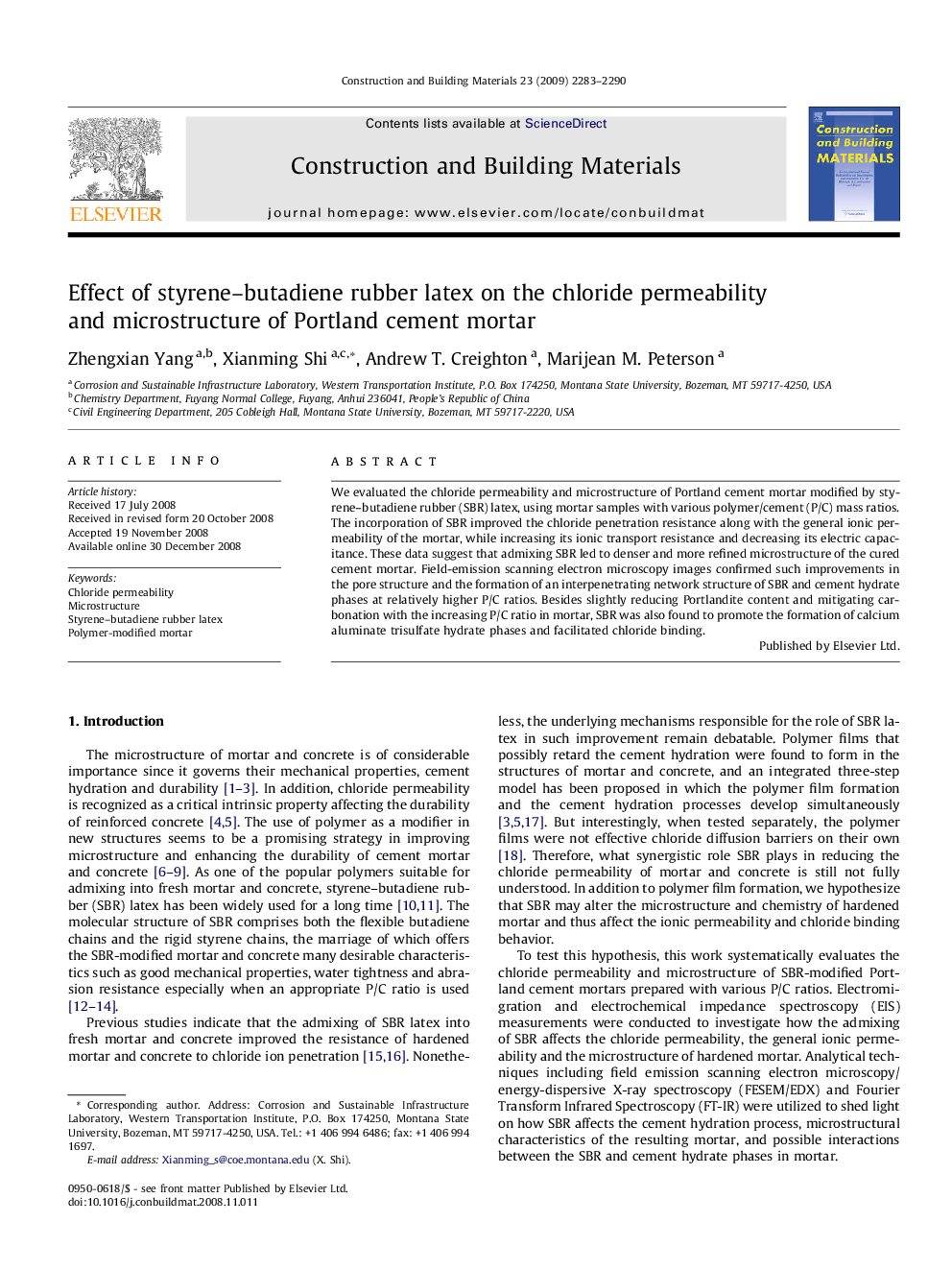| Article ID | Journal | Published Year | Pages | File Type |
|---|---|---|---|---|
| 260337 | Construction and Building Materials | 2009 | 8 Pages |
We evaluated the chloride permeability and microstructure of Portland cement mortar modified by styrene–butadiene rubber (SBR) latex, using mortar samples with various polymer/cement (P/C) mass ratios. The incorporation of SBR improved the chloride penetration resistance along with the general ionic permeability of the mortar, while increasing its ionic transport resistance and decreasing its electric capacitance. These data suggest that admixing SBR led to denser and more refined microstructure of the cured cement mortar. Field-emission scanning electron microscopy images confirmed such improvements in the pore structure and the formation of an interpenetrating network structure of SBR and cement hydrate phases at relatively higher P/C ratios. Besides slightly reducing Portlandite content and mitigating carbonation with the increasing P/C ratio in mortar, SBR was also found to promote the formation of calcium aluminate trisulfate hydrate phases and facilitated chloride binding.
